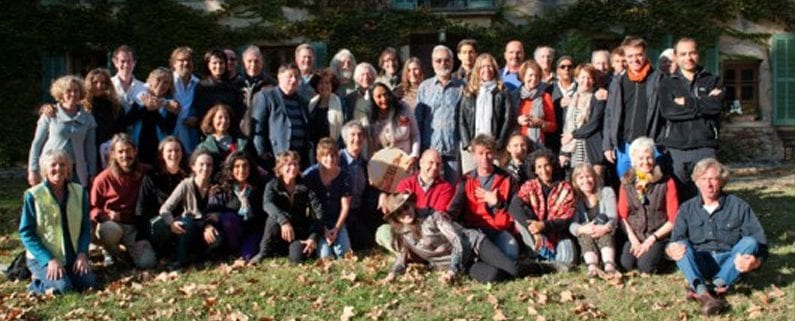Roger Malina
“The man who says it cannot be done should not interrupt the person doing it”
I recall our dear friend, the late geophysicist Keith Runcorn saying there was nothing to equal
the excitement of a new observational tool, because it is totally unknown what it will reveal. Roger has had the excitement of being a pioneer not only of a new type of astronomical observatory, but one previously considered impossible because of the assumed opacity of the interstellar medium in the extreme ultraviolet spectra. Ha! Roger and his team proved the nay-sayers wrong.
It’s fitting given Roger’s balanced career that I need to first introduce Dr. Malina with his science hat on – then the artist and bridger of Two Cultures. For Roger, transcending the divide runs in the family. His father, Frank Malina, was an exemplar of the fusion of the two. Frank was not only a pioneer in space exploration and rocketry, co-founding and directing the famed Jet Propulsion Lab, but was also a kinetic artist and sculptor who brought scientists and
artists together.
Roger directed design, construction, orbital deployment and observations of the science payload on the Extreme Ultraviolet Explorer Mission launched by NASA in 1992 which yielded considerable insight into the Earth’s astronomical neighborhood and into fundamental stellar processes.
His own low-earth orbit for many years beamed him between his two principal scientific responsibilities, Director of the Center for Extreme UV Astrophysics at the University of California, Berkeley, and Director of the Laboratory of Space Astronomy in Marseilles. Trained as an astrophysicist, Roger carried out research with the Observational Cosmology Research Group involved in the study of dark matter and dark energy at the Astrophysical Laboratory of Marseille.
He is a fellow of the Royal Astronomical Society, the British Interplanetary Society and Roger
co-chairs the International Academy of Astronautics’ Committee on Space
Activities and Society.
Now (perhaps here I should put on a French beret) for the introduction of Roger comme un homme des
artes et de lettres.
Since 1982, he has served as Executive Editor of the journal, Leonardo, devoted to the cross-fertilization
of the arts, sciences and technology.. He also serves as Chairman Emeritus of
the Board of Leonardo, The International Society for the Arts, Sciences and
Technology in San Francisco. Roger runs Yasmin, a network of Mediterranean
Artists and Scientists, and is President of the Leonardo Observatory of Arts et
Technosciences in Paris.
Roger was awarded the “Gold Laser” Prize by the International Video Art Organization.
Once before Roger gave a talk at an Institute of Ecotechnics conference on the topic of
“Explorations of the Invisible Cosmos”. Today, he wears both his scientist and
artist caps, to explore a visible cosmos – what happens when science and art
meet. Do they cross-fertilize and co-evolve? Make a massive explosion like a
cultural super-nova? Or do both disappear into a black hole, an event-horizon,
in a maze of misunderstandings, accidents and confusions? The interaction of
the worlds of science and art has been particularly fertile in the
Mediterranean.
Who could be a better guide than Roger Malina as he explores: From Science to Art and Back:
Problems in Translation?
[/et_pb_text][/et_pb_column][/et_pb_row][/et_pb_section]

